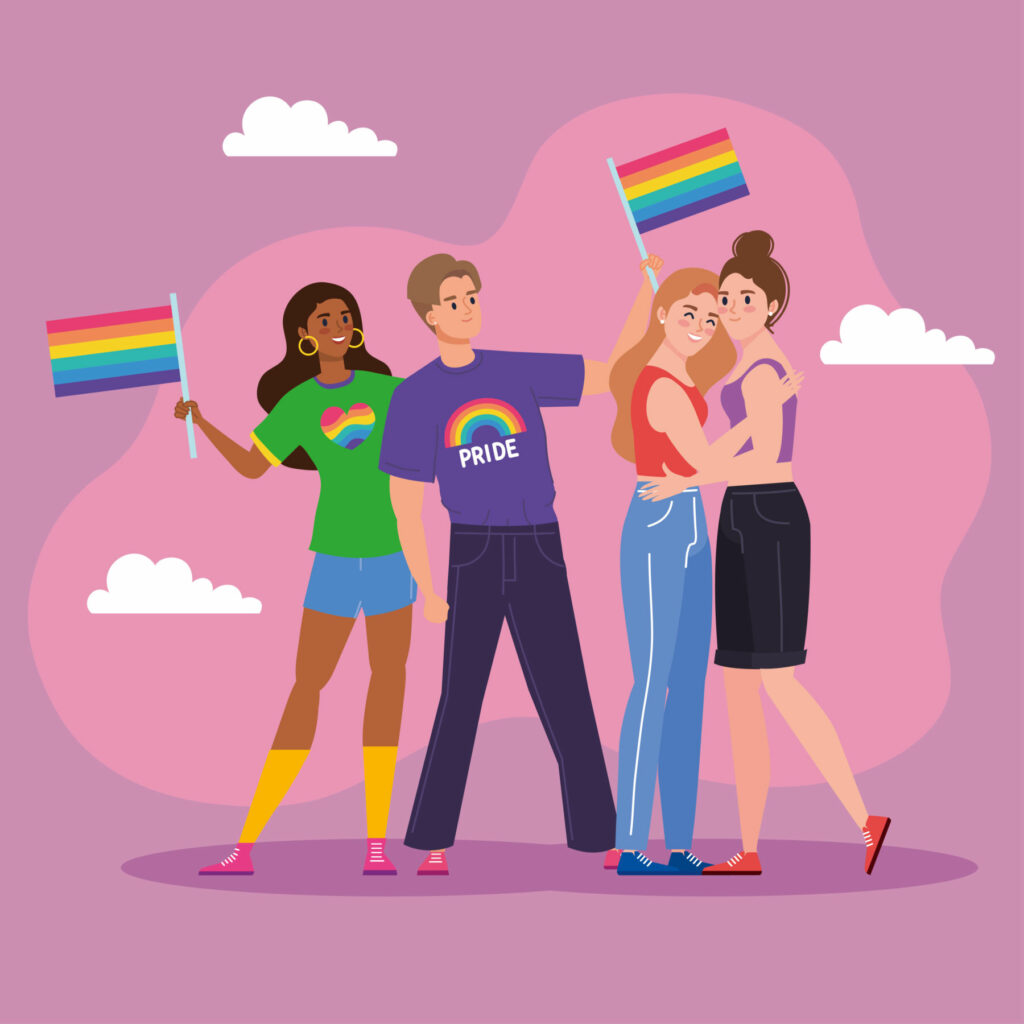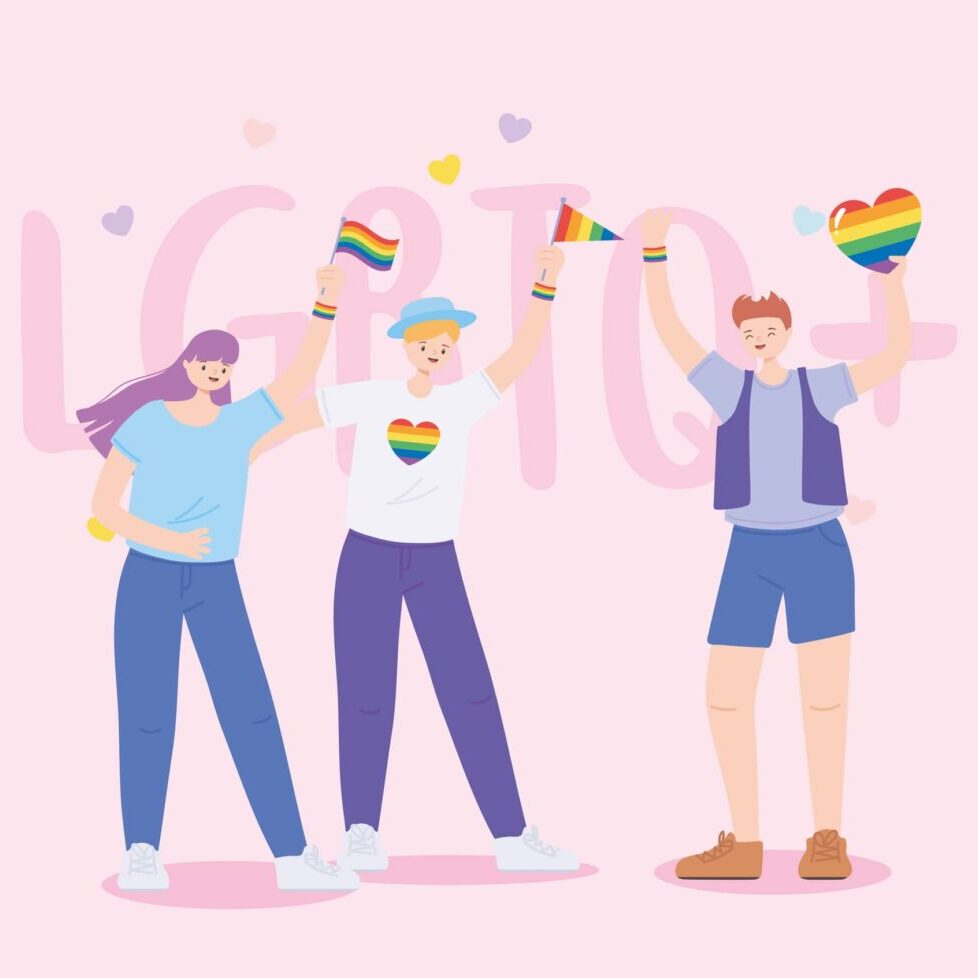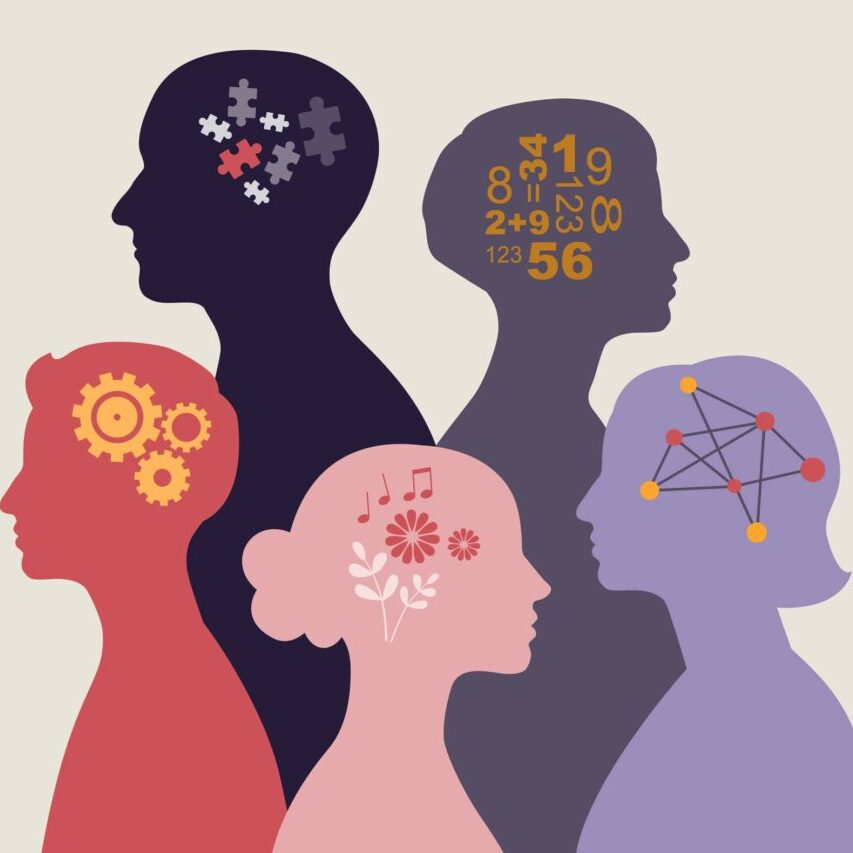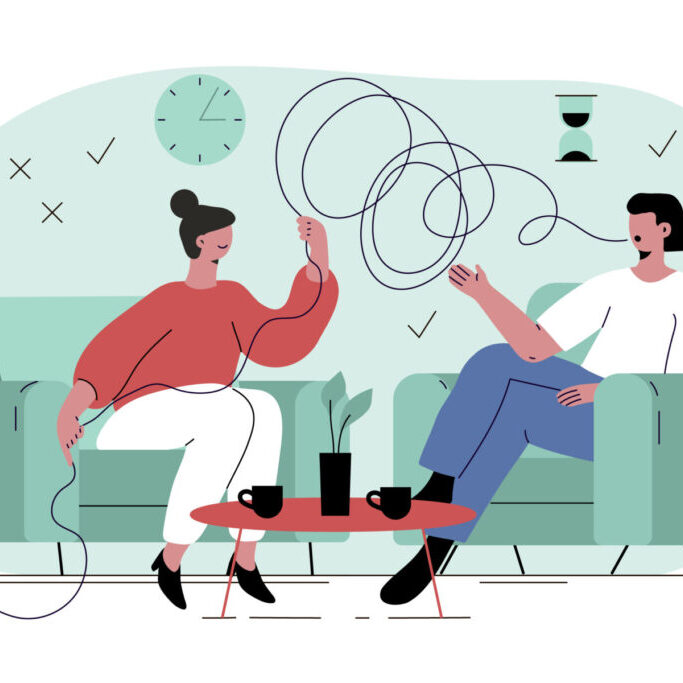Understanding LGBTQ+ Mental Health During Pride Month

Pride Month is a time of celebration, reflection, and advocacy for the queer and LGBTQ+ community. It commemorates the Stonewall Riots of 1969, a pivotal event in the fight for LGBTQ+ rights. Pride Month serves as an opportunity to celebrate the diversity and resilience of the LGBTQ+ community, recognize the progress made, and acknowledge the ongoing challenges faced by queer and LGBT people, particularly in terms of mental health.
Despite significant strides in societal acceptance and legal protections, stigma and discrimination persist, contributing to the disproportionately high rates of mental health struggles among LGBTQ+ individuals. Pride offers a time to more deeply reflect and understand these challenges and strategies to address LGBTQ mental health needs.
Disparities in LGBTQ+ Mental Health
Numerous studies and reports highlight the alarmingly high rates of mental health issues among queer and LGBTQ+ individuals. Research indicates that LGBTQ+ people are at a higher risk for depression, anxiety, suicidality, PTSD, homelessness, and substance abuse compared to their heterosexual and cisgender counterparts.
- Depression is a pervasive issue in LGBTQ mental health. A 2021 study by Meyer et al. found that 52% of LGBTQ+ individuals reported experiencing symptoms of depression, compared to only 30% of their heterosexual counterparts. Meyer et al. (2021) attribute these higher rates of depression to minority stress, which includes experiences of discrimination, stigma, and internalized homophobia or transphobia. This significant disparity underscores the mental health challenges faced by queer people and the need for more pride month mental health awareness.
- Suicidality is another critical concern among queer and LGBT people. According to a 2022 report by the Trevor Project, 45% of LGBTQ+ youth seriously considered attempting suicide in the past year. This rate is significantly higher among trans and nonbinary youth, with 52% reporting suicidal ideation.
- Anxiety disorders are also prevalent among LGBTQ+ individuals. A 2022 report from the Human Rights Campaign (HRC) reported that 40% of LGBTQ+ adults experienced generalized anxiety disorder in the past year, compared to 18% of the general population.
- Post-Traumatic Stress Disorder (PTSD) is another concern for LGBTQ+ mental health. According to a 2021 study by the American Psychological Association, 30% of LGBTQ+ individuals reported symptoms of PTSD, compared to 10% of their heterosexual peers.
- Homelessness is a severe issue for queer and LGBT people, particularly among queer youth. A 2022 report by the Williams Institute found that LGBTQ+ youth are 120% more likely to experience homelessness compared to non-LGBTQ+ youth.
- Substance abuse rates are also higher among LGBT and queer people. A 2021 study by SAMHSA (Substance Abuse and Mental Health Services Administration) reported that 39% of LGBTQ+ adults used illicit drugs in the past year, compared to 17% of the general population.
LGBTQ+ Mental Health Struggles: Why the Disparity?
The higher rates of mental health issues in queer and LGBT people are not a consequence of their sexual orientation or gender identity but stem from systemic oppression, discrimination, and stigma. Research consistently shows that social, cultural, and institutional rejection, bullying, violence, stigma, and marginalization significantly elevate the risk of mental health challenges for queer people.
These negative experiences often result in feelings of shame, guilt, loneliness, internalized homophobia or transphobia, and low self-esteem, leading to prolonged emotional and psychological distress and a diminished quality of life.
Queer people frequently encounter rejection from family members, peers, and society at large, manifesting in various forms, including bullying, exclusion, and verbal or physical harassment. According to a 2022 study by the Williams Institute, 40% of LGBTQ+ individuals reported experiencing some form of discrimination in the past year, significantly impacting their mental health.
Bullying and violence are particularly pervasive issues for LGBTQ+ youth. A 2021 study by the CDC found that 34% of LGBTQ+ students reported being bullied at school, compared to 19% of heterosexual students. Additionally, the same study reported that 20% of LGBTQ+ students experienced physical violence at school. These experiences of bullying and violence contribute to the high rates of anxiety, depression, and PTSD within the LGBTQ+ community.
Marginalization in various aspects of life, including healthcare, employment, and housing, further compounds the mental health struggles of LGBTQ+ individuals. This marginalization can lead to economic instability, limited access to quality healthcare, and increased stress. A 2021 report by the National Center for Transgender Equality found that 29% of transgender individuals lived in poverty, compared to 14% of the general population, highlighting the economic disparities faced by the LGBTQ+ community.
The stigma and discrimination faced by LGBTQ+ individuals can also lead to internalized homophobia and transphobia, where individuals internalize negative societal attitudes towards their own sexual orientation or gender identity. This internalization can result in low self-esteem, self-loathing, and significant mental health challenges. A 2022 study by Meyer et al. found that internalized homophobia and transphobia were significant predictors of depression and anxiety in LGBT people.
Queer people often experience intersecting oppressions, such as racism, ableism, and classism, which further exacerbate LGBTQ mental health struggles. For example, queer people of color face both racial and LGBTQ+ discrimination, compounding their experiences of stress and marginalization.
A 2021 study by the National LGBTQ Task Force found that queer people of color were more likely to experience mental health issues compared to their white queer counterparts. Despite significant progress in supporting LGBTQ mental health, much work remains.
The Role of the Mental Health Field in LGBTQ+ Mental Health
Historically, the mental health field – like society at large – contributed to the stigmatization and marginalization of queer and LGBT people. Until 1973, homosexuality was classified as a psychological disorder in the Diagnostic and Statistical Manual of Mental Disorders (DSM). While the American Psychological Association (APA) removed homosexuality from the DSM in 1973, they retained a diagnosis for individuals experiencing distress about their sexual orientation, which wasn’t completely removed until later editions.
On a global scale, the World Health Organization (WHO) removed homosexuality from its list of diagnosable conditions in 1992 but retained a diagnosis for individuals wishing to change their sexual orientation due to associated disorders. These classifications perpetuated the idea that LGBTQ+ identities were pathological and contributed to harmful practices such as aversion therapy.
Aversion therapy, a widely used practice, involves exposing homosexual individuals to negative stimuli, such as electric shocks while showing them images of naked men to elicit an unconditioned negative response. These practices caused immense harm and trauma to countless LGBTQ+ individuals.
In recent years, the APA and other mental health organizations have adopted a more affirming stance (About time!), promoting the affirmation of queer and LGBTQ+ identities rather than attempting to change them. This shift has been more effective in supporting LGBTQ mental health and fostering a more inclusive and supportive mental health care environment.
Beyond Pride Month Mental Health Initiatives!
There are many ways individuals and communities can support LGBTQ+ mental health, during Pride and beyond. Here are a few:
- Support and Participate in Pride Events – Engaging in Pride or LGBTQ+ advocacy events helps create visibility and solidarity, promoting a sense of community and belonging for queer people.
- Use Gender-Neutral Language – Adopting inclusive language shows respect and recognition of diverse gender identities, fostering an inclusive environment.
- Advocate for LGBTQ+ Rights – Speaking out against homophobic or transphobic comments, both verbally and politically, and supporting policies that protect LGBTQ+ rights can help reduce stigma and discrimination.
- Support LGBTQ+ Youth – Providing support to LGBTQ+ youth groups and listening to queer youths’ lived experiences can offer much-needed validation and encouragement. The presence of even a single, supportive adult is a powerful protective factor for the mental health of queer youth.
The Role of LGBTQ+ Affirming Therapists
LGBT affirming therapists play a crucial role in supporting queer mental health. These therapists help by treating presenting issues independently of the client’s sexuality or gender, addressing mental health concerns without making assumptions about these aspects unless they are relevant to the discussion. Demonstrating unconditional positive regard, LGBT affirming therapists affirm the client’s experiences and identities, showing respect and understanding.
They approach each client as an individual, avoiding stereotypes and preconceived notions about queer identities. Additionally, LGBT affirming therapists ensure that clients can indicate and use their preferred pronouns on paperwork and in interactions, creating an inclusive and respectful environment.
Beyond their clinical work, these therapists engage in public advocacy, promoting queer rights and inclusive mental health practices within both the community and professional settings. Through these efforts, LGBT affirming therapists provide essential support and foster a more inclusive mental health care system for queer people.
While significant progress has been made in supporting queer and LGBTQ+ mental health, there is still much work to be done. Pride Month serves as a reminder of the resilience and strength of queer and LGBT people throughout history and a reminder of the ongoing need for advocacy and support.
By understanding the unique challenges faced by queer and LGBT people and promoting inclusive and affirming mental health practices, we can work towards a future where all individuals, regardless of their sexual orientation or gender identity, can thrive.
This blog is made for informational and educational purposes only. It is not medical advice. The information in this blog is not intended to (1) replace a one-on-one relationship with a qualified licensed health care provider, (2) create or establish a provider-patient relationship, or (3) create a duty for us to follow up with you.



